Collaboration in Action: Conserving Manta Rays in the Atlantic
The turquoise waters of the Mexican Caribbean provided the perfect backdrop for an extraordinary week of manta ray conservation work. The Manta Caribbean Project (MCP), based in Isla Mujeres, has been studying these magnificent creatures in Marine Protected Areas (MPAs) of the Yucatán Peninsula for over a decade. In 2024, a collaborative tagging expedition brought together researchers from National Oceanic and Atmospheric Administration (NOAA) Fisheries, The Manta Trust, ECOSUR, and other international partners, to deepen our understanding of these elusive, highly migratory species.
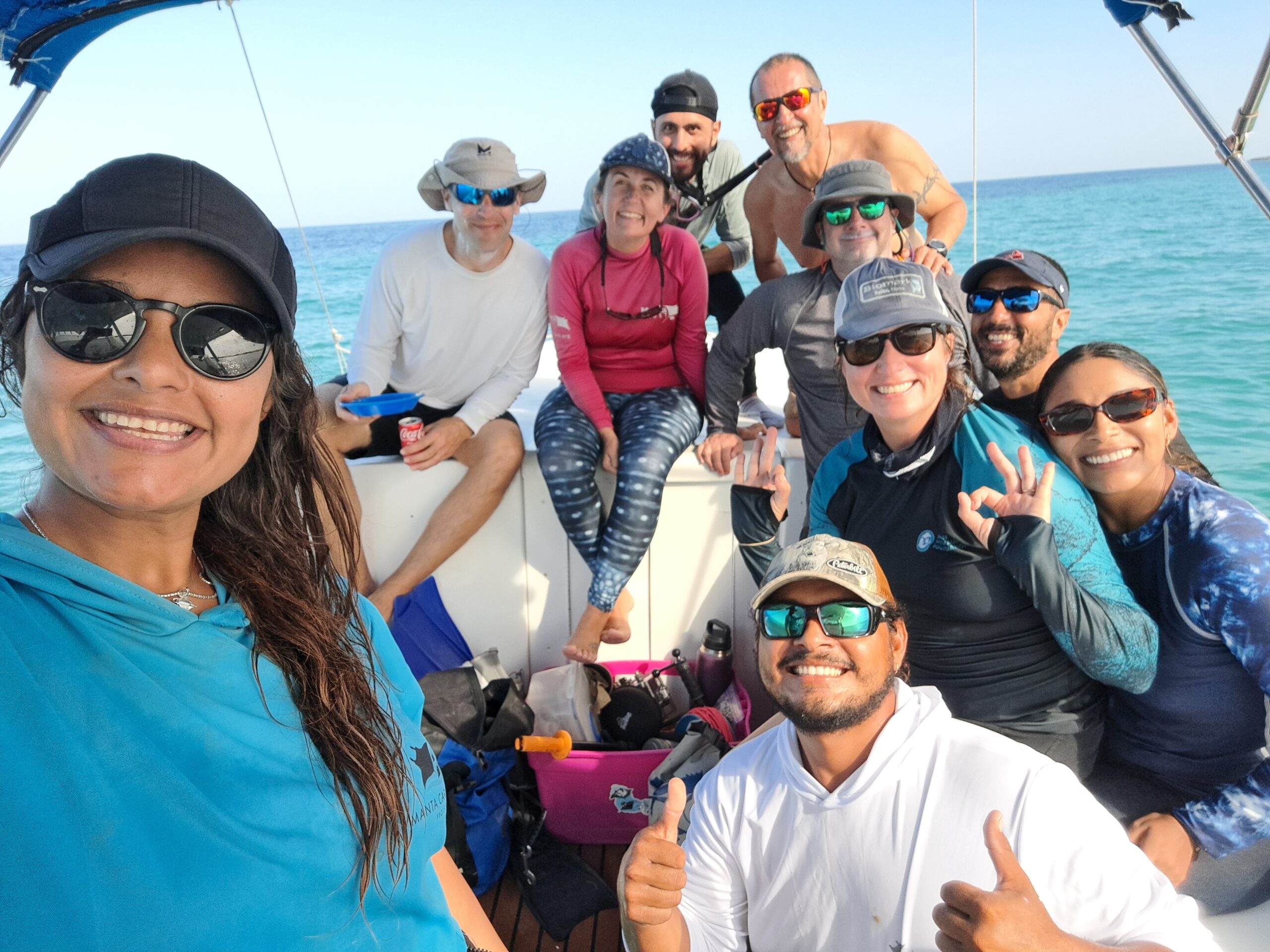
NOAA Expedition Research Team on Boat_Isla Mujeres, Mexico. Photo © Karen Fuentes
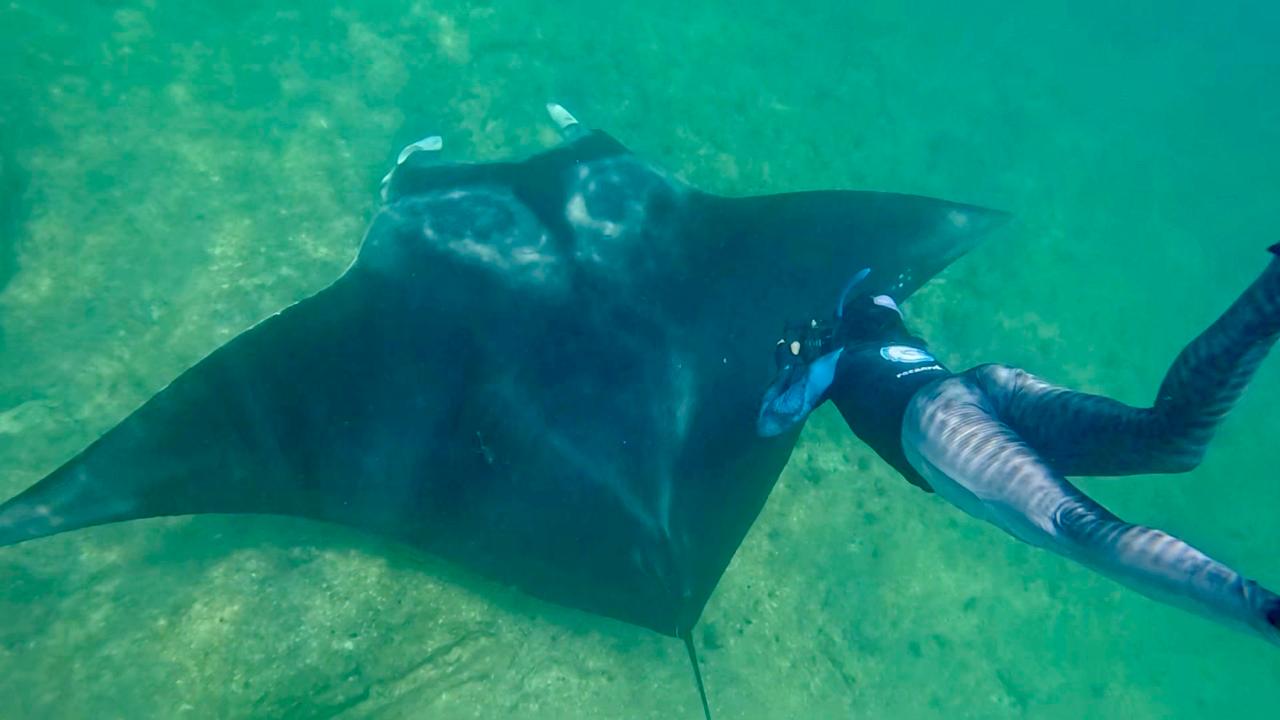
Jessica Pate with Atlantic manta ray in Isla Mujeres, Mexico. Photo © Christian Jones
Atlantic manta rays (Mobula cf. birostris) remain an enigma. Where do they go when they leave the MPAs of the Yucatán Peninsula? Do they cross international waters to U.S. coastlines, Central America, or the Caribbean islands? To answer these questions, a collaborative tagging programme was initiated. Satellite tags help track these rays’ movements, providing critical data for conservation policies to protect them across borders.

Ixchel photographing satellite tag off Isla Mujeres, Mexico. Photo © Jessica Pate
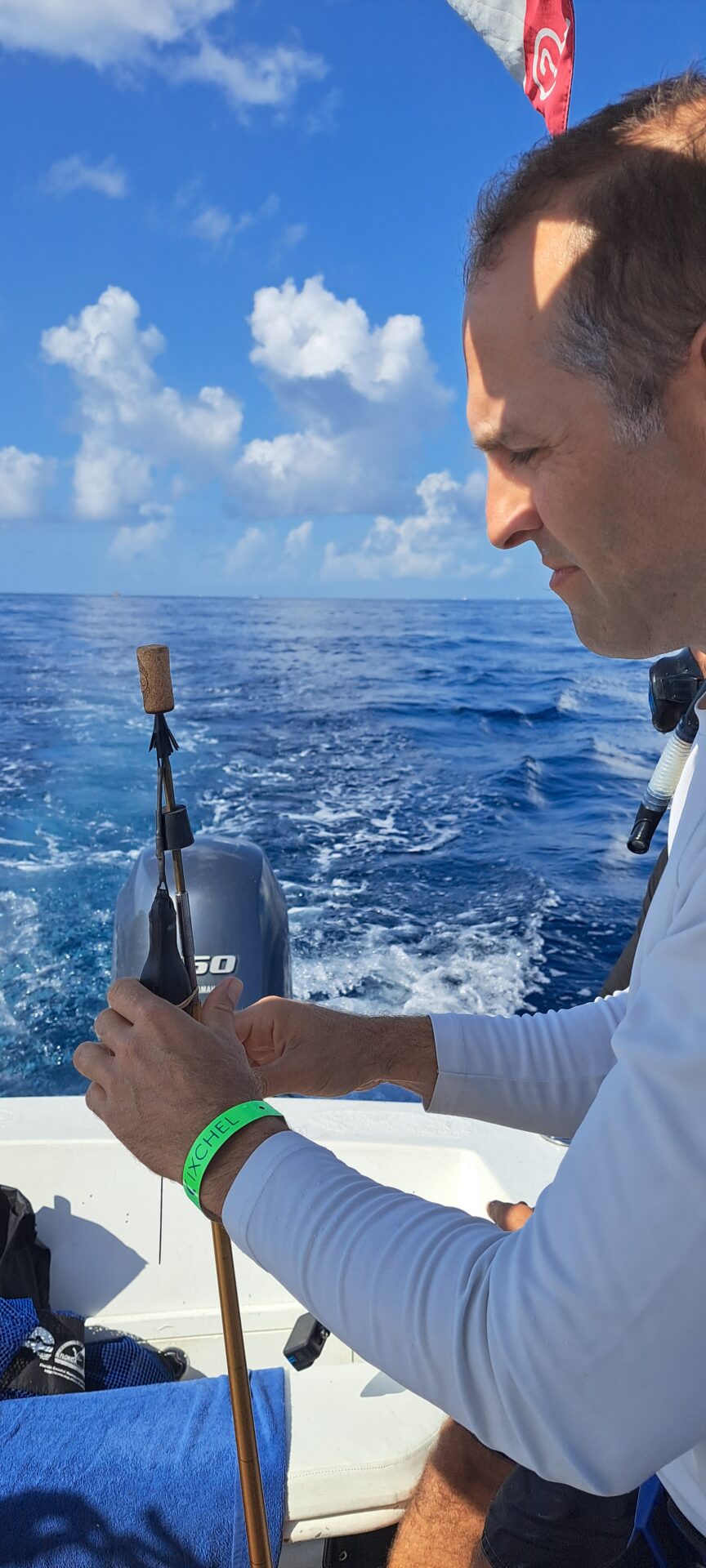
Nick Farmer Preparing a manta Tag. Photo © Karen Fuentes
The 2024 expedition showcased the power of collaboration. Researchers from the Florida Manta Project, Caribbean Islands Manta Conservation Program, and Océanos Vivientes joined the international partners and the local MCP team, led by Captain Jesus, Ixchel, and Karen. Sharing knowledge and skills strengthened ties between researchers while advancing manta ray conservation. For some team members, like Nicole Pelletier whose work is based in Bonaire, the expedition was their first chance to see an Atlantic manta ray in the wild and witness tagging and biopsy collection in action. Drone technology also played a significant role during the expedition. Jessica Pate from the Florida Manta Project provided hands-on training to the MCP team, teaching them how to operate drones in windy conditions. The drone proved invaluable, spotting whale sharks and even capturing a manta ray barrel-rolling during a feeding session. This particular manta ray was later tagged, contributing to the study’s growing database.
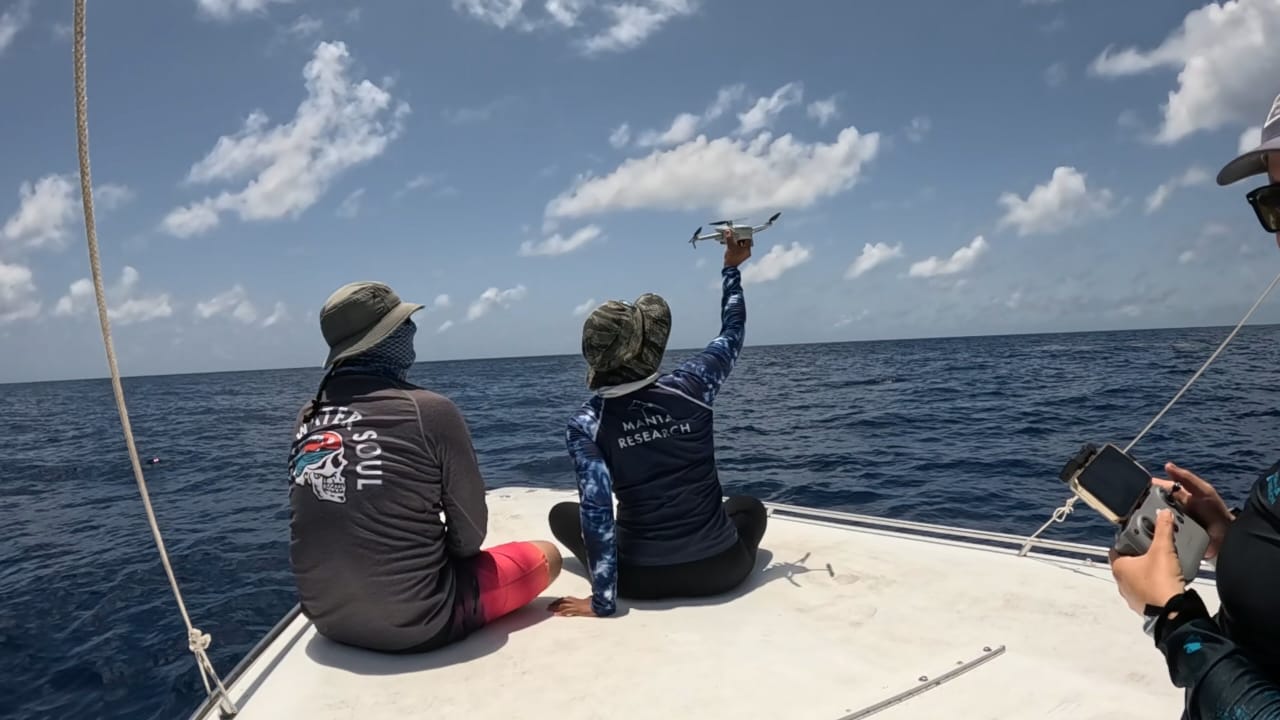
Ixchel learning how to operate the drone. Photo © Karen Fuentes
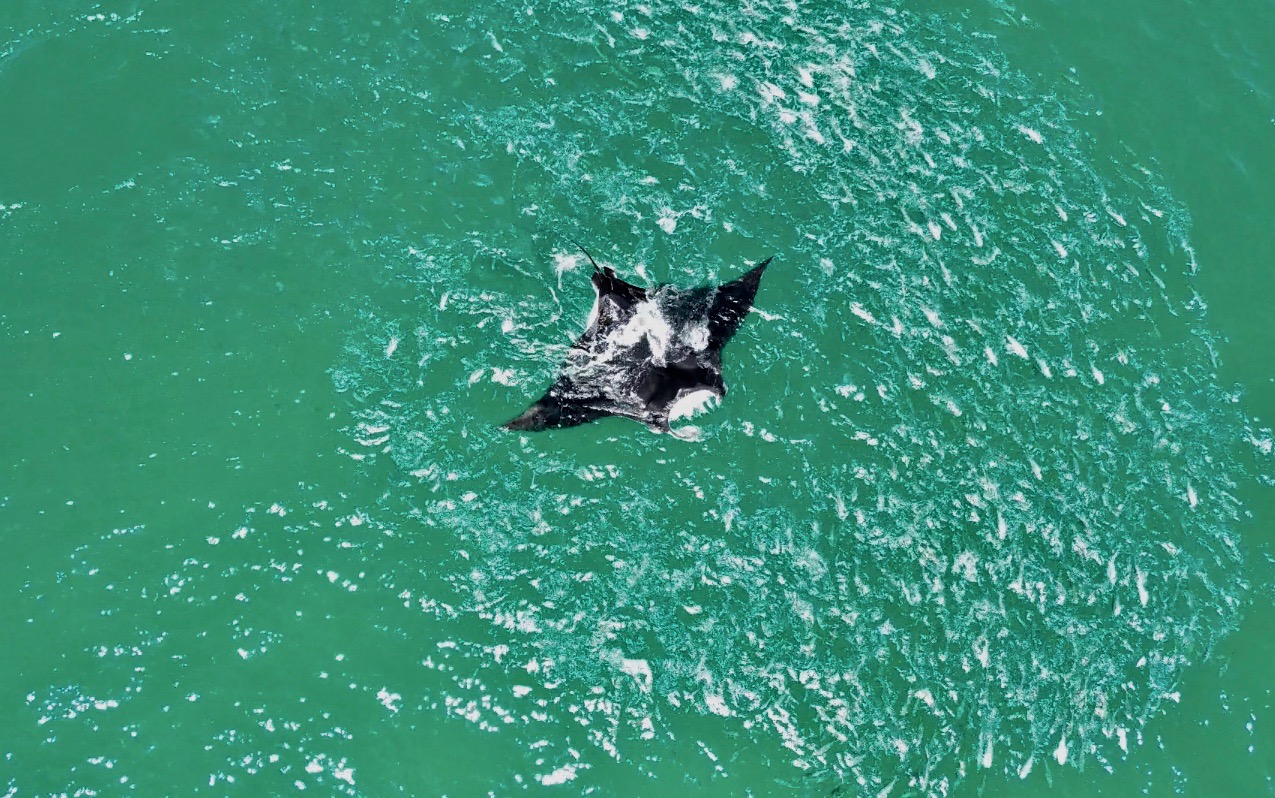
Atlantic manta ray aerial shot in the waters around Isla Mujeres, Mexico. Photo © Karen Fuentes
Over four days, the team encountered 12 Atlantic manta rays and successfully deployed satellite tags on all individuals targeted. Each manta was identified and catalogued with unique data, including size, sex, colouration patterns, and any visible injuries. The team also collected biopsy samples and drone imagery to complement the satellite data. Among the highlights was “Amiga,” a female manta encountered on multiple days. Her calm behaviour allowed researchers to closely observe her as she swam through the MPA, an important habitat for marine species, including whale sharks. Field research always comes with challenges, from unpredictable weather to the potential absence of target species. Fortunately, this expedition enjoyed favourable conditions and plenty of manta ray sightings, enabling the team to make the most of their time on the water.
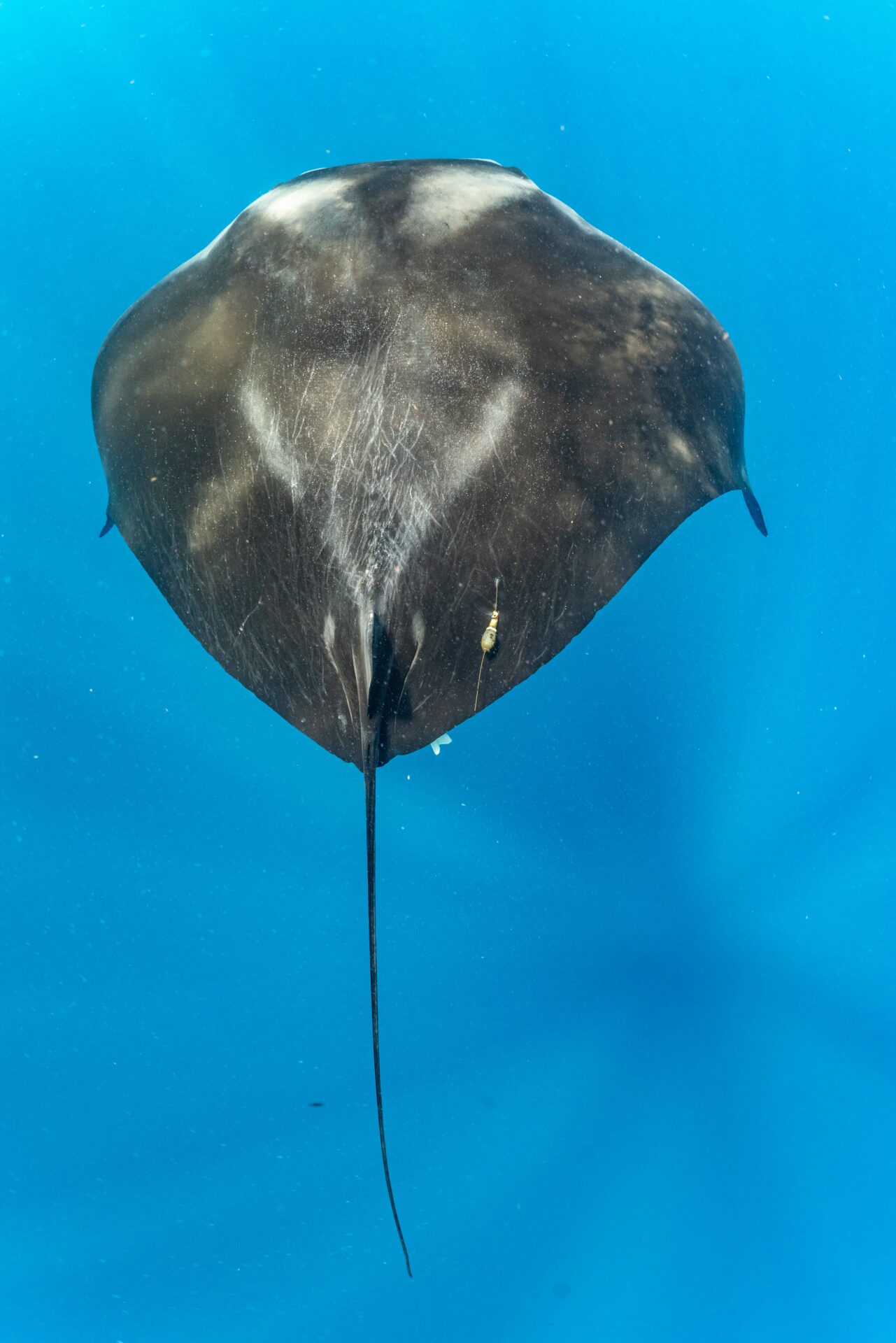
Satellite tagged Atlantic manta ray. Photo © Valentina Cucchiara
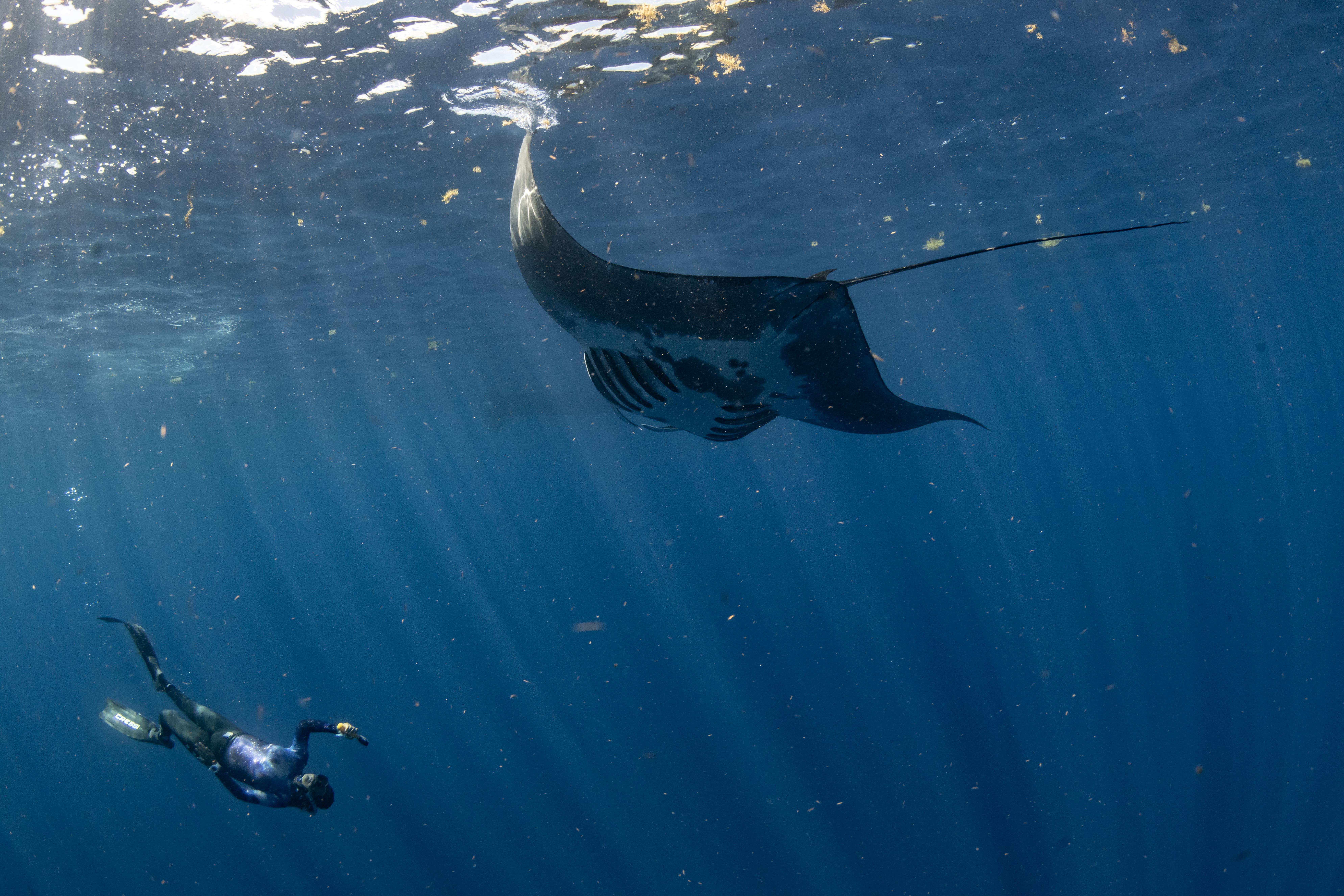
Ixchel photographing Atlantic manta ray. Photo © Valentina Cucchiara
While field expeditions are thrilling, they are just one part of the conservation puzzle. The data collected through satellite tags will provide crucial insights into manta ray ecology, biology, and habitat use. Understanding their movement patterns is vital for protecting these endangered species across their range. The Atlantic Manta and Devil Ray Research Coalition, which the Manta Trust helped to establish, is working to enhance transboundary conservation efforts. By uniting researchers from 15 organisations, the coalition aims to develop science-based policies and management strategies to safeguard critical habitats. This expedition exemplified these efforts, demonstrating how collaboration can drive impactful conservation work.
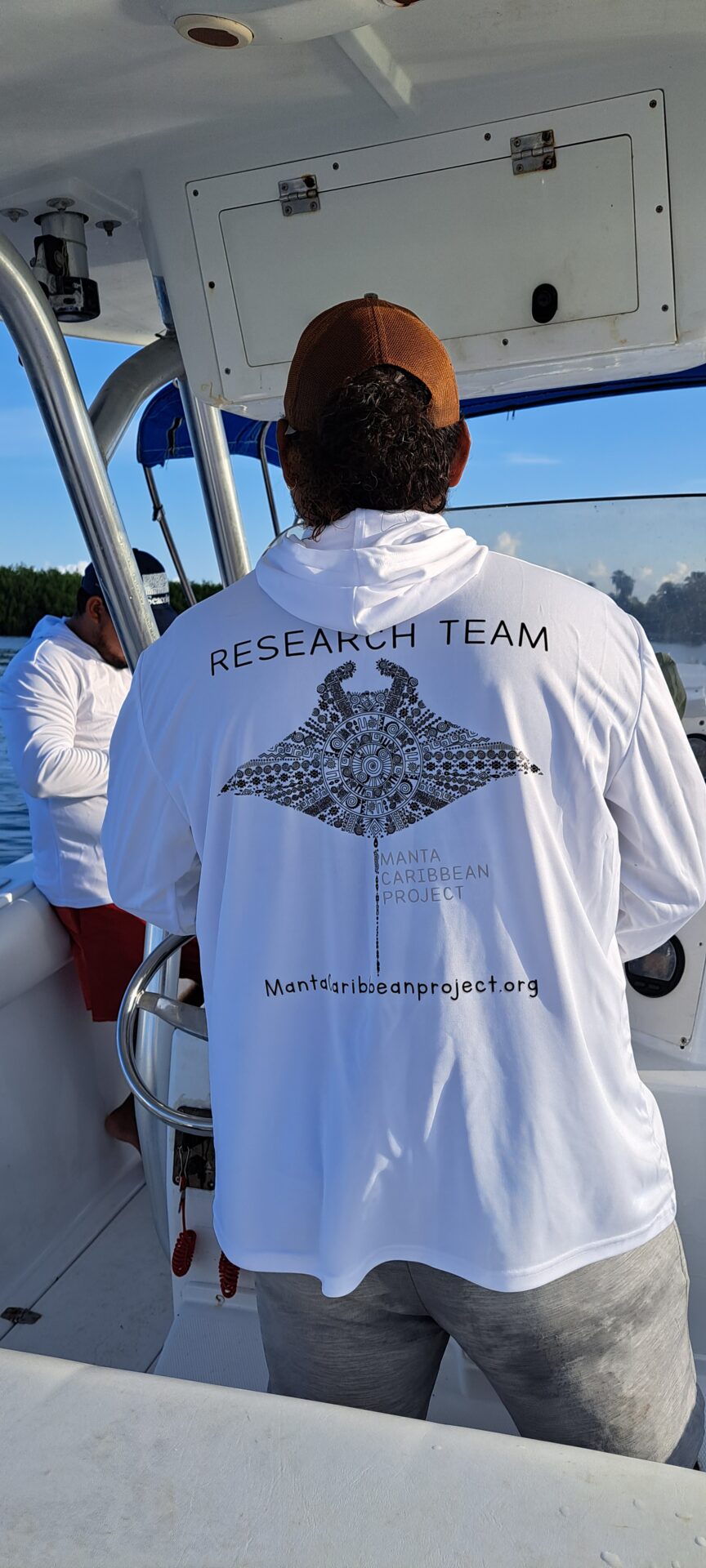
Captain Jesus. Photo © Karen Fuentes
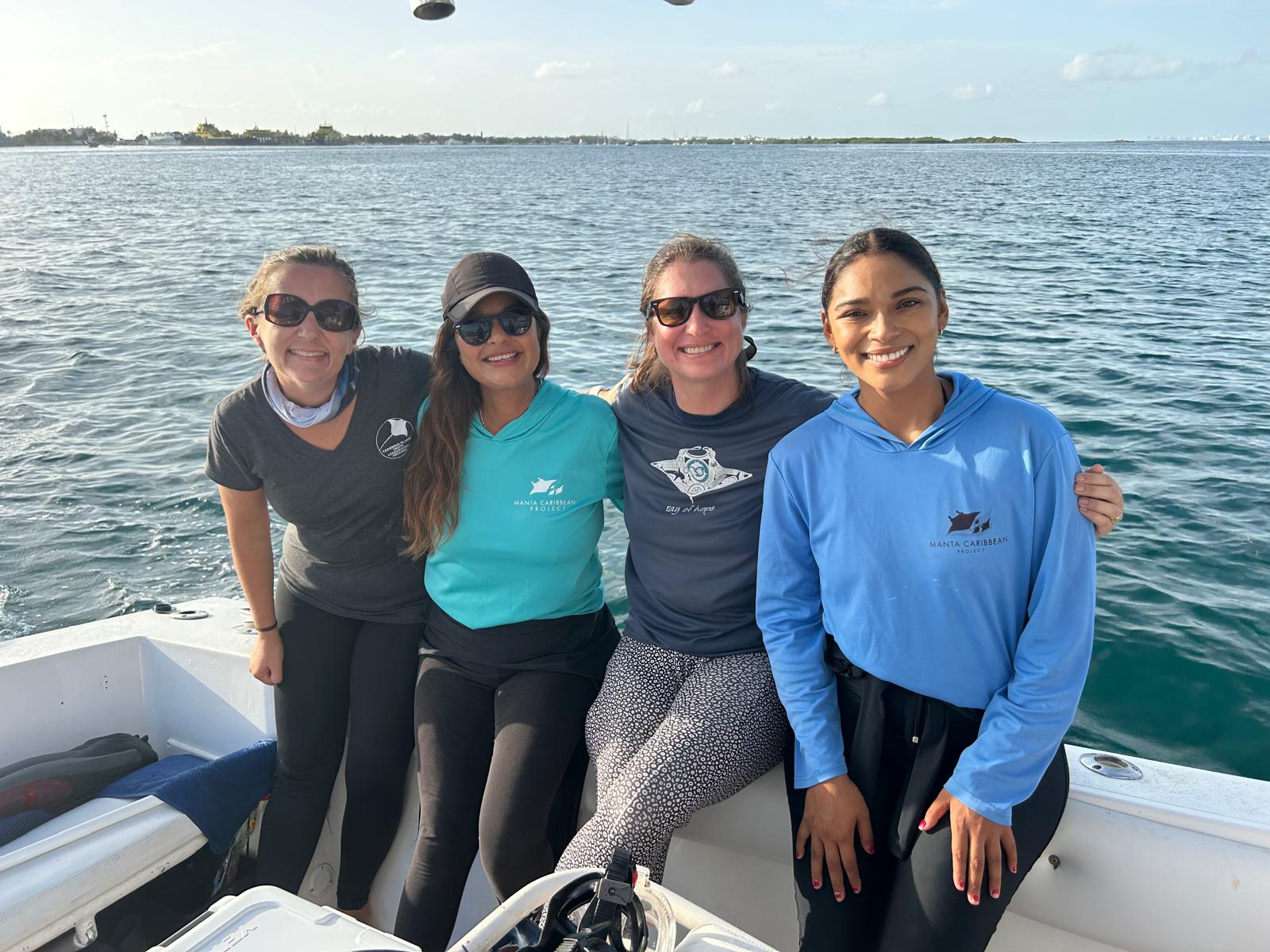
NOAA Expedition Research Team. Photo © Jesus Valdez
As the tagged manta rays continue their journeys, the data they transmit will help uncover mysteries about their lives and migration patterns. Each discovery brings us closer to ensuring a brighter future for these majestic creatures. Reflecting on the week, the team celebrated their achievements with a shared dinner prepared by Captain Jesus. The camaraderie and shared passion for manta conservation created an unforgettable experience, highlighting the strength of collaboration in addressing global conservation challenges. From the waters of Isla Mujeres to the Gulf of Mexico and beyond, this work lays the foundation for improved protection of manta rays and the ecosystems they inhabit. Together, we are making strides to conserve one of the ocean’s most iconic species.
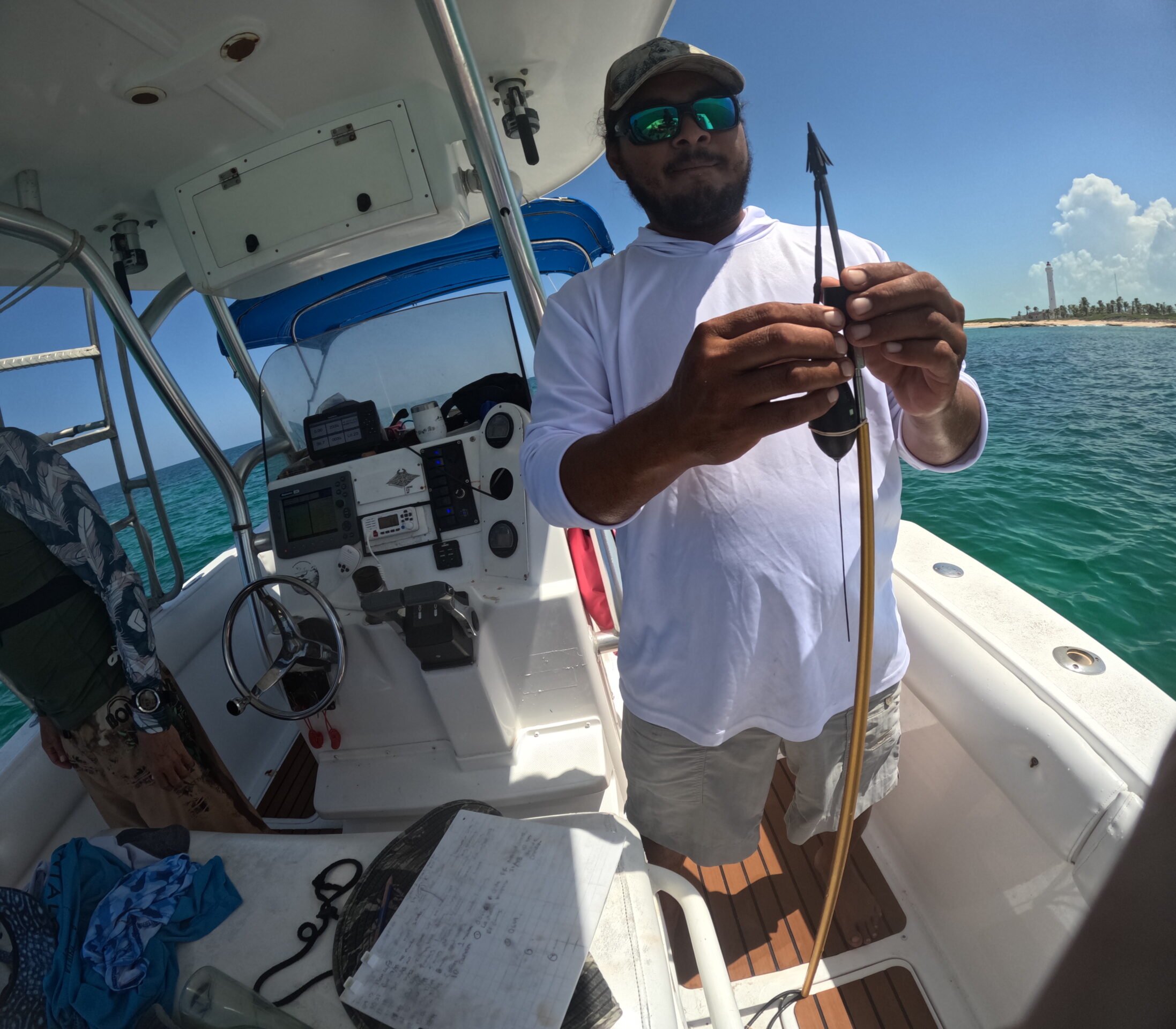
Captain Jesus Preparing a Tag. Photo © Karen Fuentes
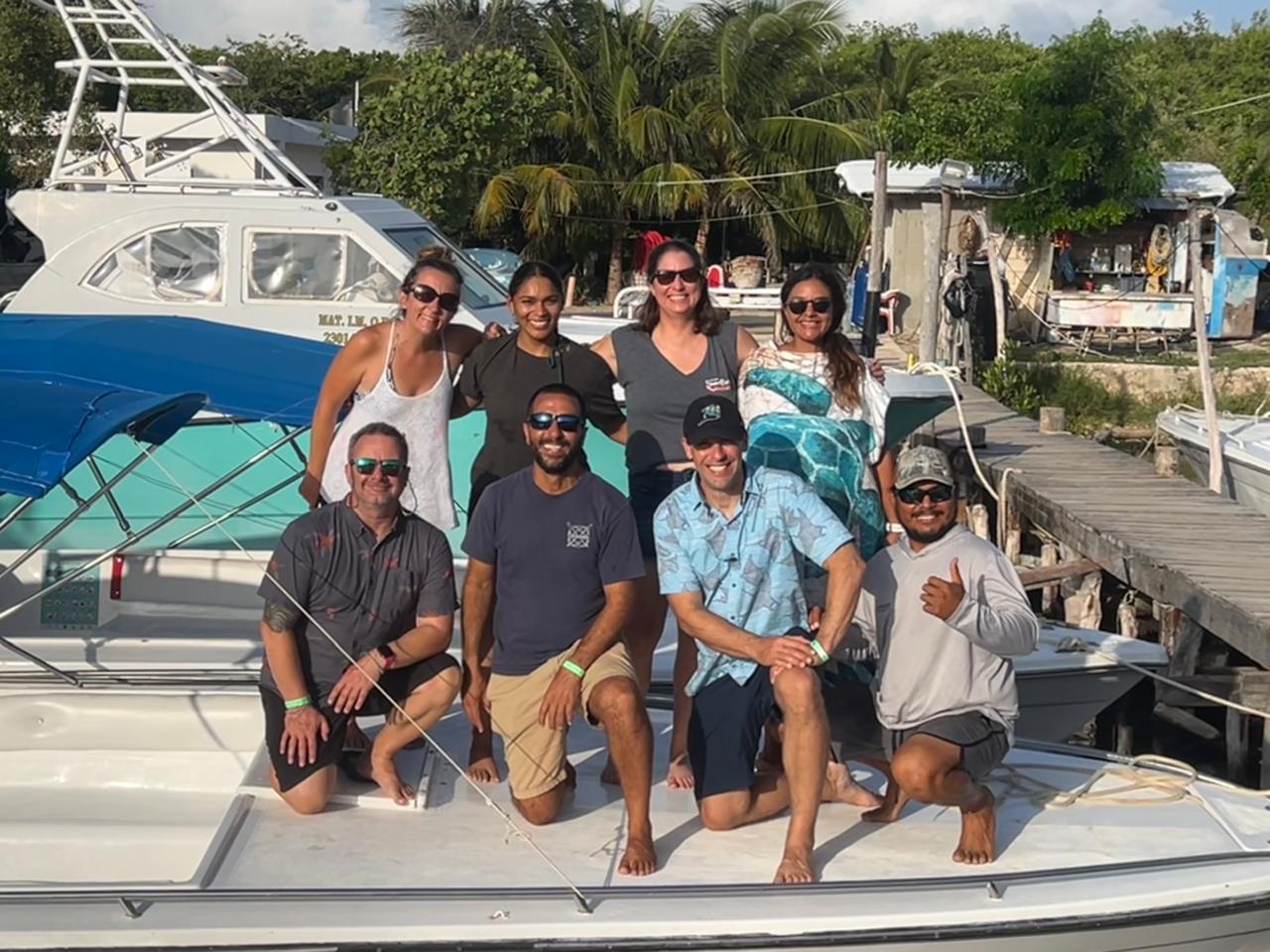
NOAA Expedition Research Team. Photo © Karen Fuentes
